How to spend 48 hours in Valletta
From spectacular sights to delicious food and drink, discover what to see and do on a short break in the Maltese capital
Throughout 2018, Valletta enjoyed its year in the sun as European Capital of Culture, with the heritage accolade having a lasting impression on one of the Mediterranean’s most fascinating cities.
Here’s how to enjoy a short break in the Maltese capital.
DAY ONE
Touch down
This winter there are flights to Malta from 16 UK airports on Air Malta, British Airways, easyJet, Jet2 and Ryanair, with more to follow as the year progresses. I paid £50 return on easyJet from Gatwick.
From the airport, a taxi to Valletta costs €17; pay in advance at the counter as you leave the terminal. Alternatively, buses X1, X2 and X3 run frequently.
Check in
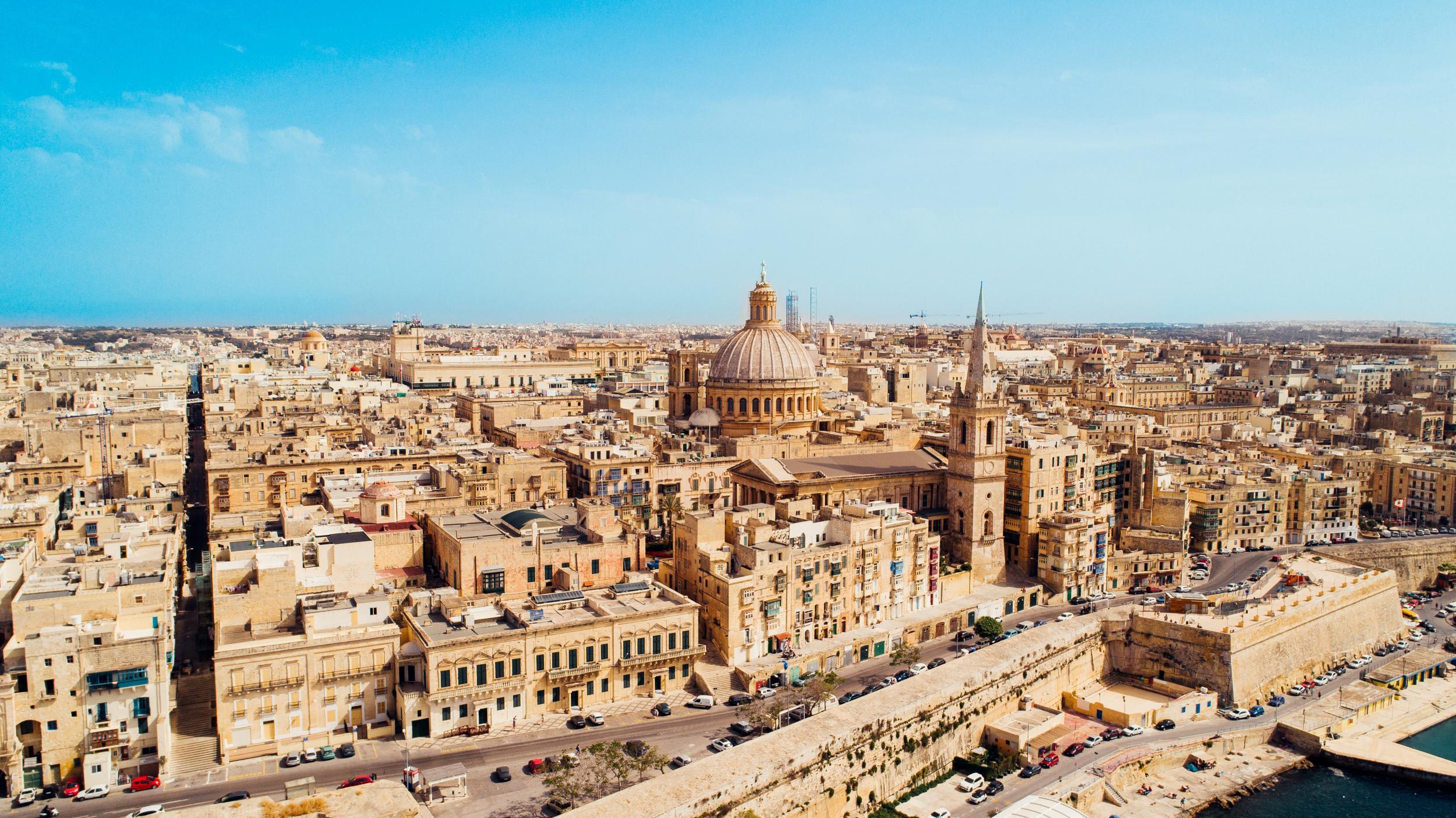
One of the new generation of boutique hotels in Valletta is the SU29. The name comes from the address: 29 St Ursula Steps. For solo travellers it has outstanding single rooms, with a range of excellent doubles such as the Theatre Room for €165 including breakfast, and – on the top floor – the ultra-luxurious Charles & Ron Suite, named after the designers. It has a balcony with the prospect of superb views across Valletta and the Med available every day from dawn.
Outside the city walls, the five-star Phoenicia is a mid-20th-century masterpiece which often has very good-value specials, such as the 25 per cent January discount – with rates as low as €126.
Get your bearings
The Mediterranean has brought wave after wave of civilisation, creating layer after layer of history, but the origins of Valletta rest with the Knights of St John: this Christian military order of European noblemen began by caring for pilgrims to Jerusalem. For two centuries they lived on the island of Rhodes, but were driven out by the Turks early in the 16th century. They moved on to Malta, which at the time was sparsely populated, and established a city at Vittoriosa – facing present-day Valletta.
The Turks attacked again but the knights survived the Great Siege of Malta in 1565. Their Grand Master, Jean de Vallette, decided to build a near-impenetrable citadel on the peninsula on the opposite shore. He never lived to see the city completed, but it was named in his honour: Valletta.
The city has been awarded Unesco World Heritage status because of its unique characteristics and historic importance – for example, as the first European capital city to be laid out on a grid pattern. The Knights believed having straight streets would make their fortress city easier to defend.
Valletta's backbone is Republic Street, which runs from City Gate – where the tourist office is located – to Fort St Elmo on the tip of the peninsula. Along the way it passes many of the great monuments, including St John's Co-Cathedral.
Go to church
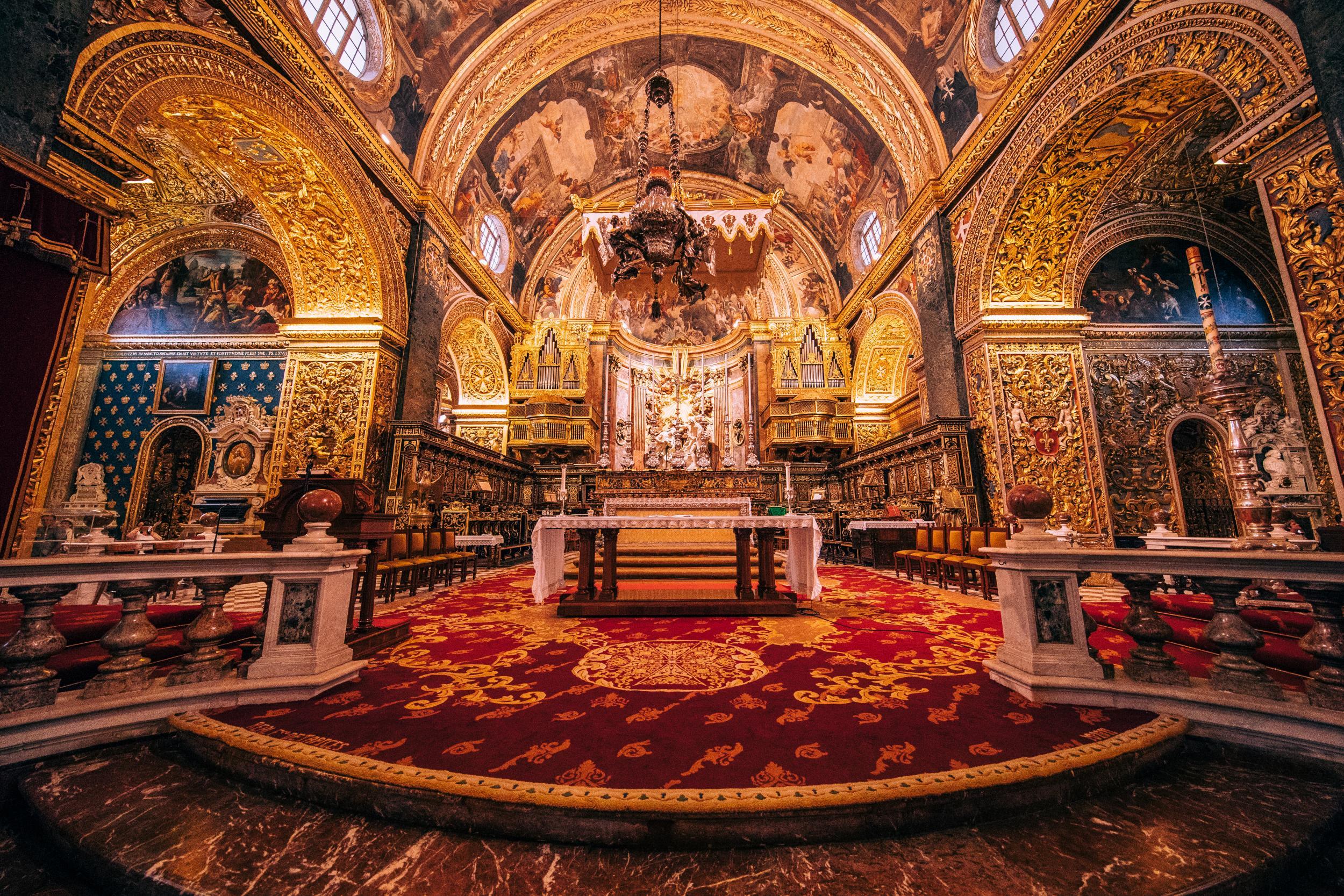
The Knights of St John, who paid for St John's Co-Cathedral, commissioned the heavily gilded Baroque interior to signify their intense religious fervour. It was completed in 1666, as London was burning in the Great Fire. The Oratory contains Caravaggio’s outstanding work, The Beheading of St John the Baptist. The painting uses light and shade to dramatic effect, and was the only work that Caravaggio actually signed – as well as his largest painting.
The Co-Cathedral opens 9.30am-12.30pm on Saturdays, and 9.30am-4.30pm Monday-Friday.
A walk in the park
Valletta's Upper Barrakka Gardens fill a strategic corner of the city's fortifications. Each nationality of knights had their own part of the walls to defend, and this was the Italian section. It yields tremendous views over the Grand Harbour and the “Three Cities” beyond it: from east to west, Vittoriosa, Cospicua and Senglea. And you can see how the honey-coloured walls of Valletta embrace crusader history, palaces and elaborate churches.
The gardens themselves are filled with fountains and monuments – including one to Sir Winston Churchill.
From the St Peter and Paul Bastion below the gardens, the Noon-day Gun is fired every day at 12 – signalling the start of lunch.
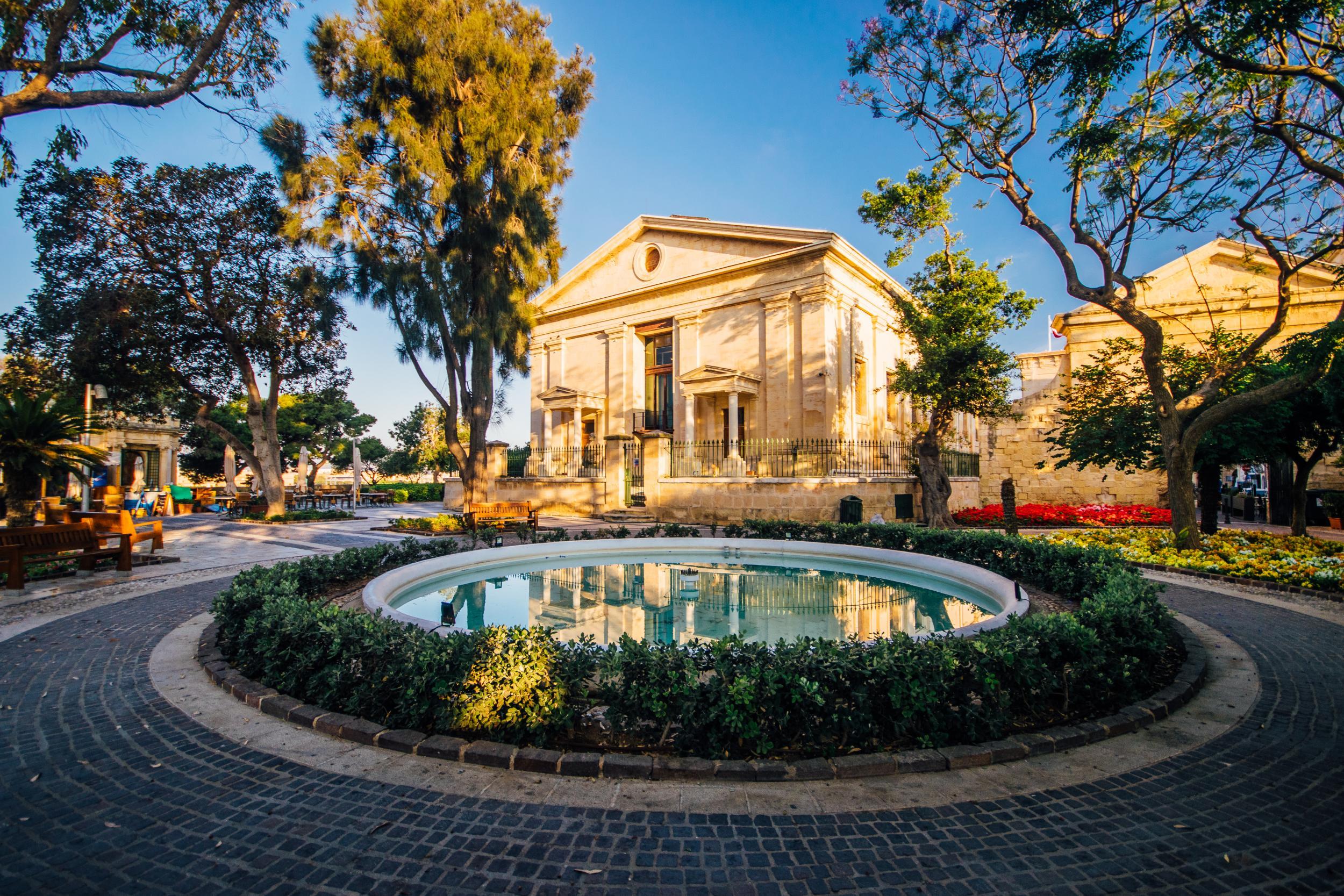
Lunch on the run
Valletta’s old market has been transformed into a stylish and appetising food hub – with a range of eateries offering everything from pizza to paella and calamares to kebabs. But for the best view, sit out on the terrace of the Star Cafe and order a Maltese ftira.
And, if you want to drift back a century or so, Valletta can deliver with plenty of retro options and traditional dishes. The Museum Cafe on Melita Street was born in 1921 and has hardly changed since. Try the imqarrun il-forn, a Maltese baked macaroni dish. It opens 7am-4pm daily, except Sunday.
Cultural afternoon
Valletta is the latest location in the Mediterranean with an outstanding art venue. The city’s final flourish as European Capital of Culture was the opening of MUŻA: the new National Museum of Art. It occupies the Auberge d’Italie, the 16th-century mansion built to house Italian-speaking knights of the Order of St John.
After a varied subsequent career as courthouse, post office and tourist office, it has finally been transformed into a ravishing collection of galleries revealing Maltese culture through the ages. Exhibits include Maltese and Italian paintings and sculptures. The venue itself is most impressive, with a courtyard filled by a 17th-century arch.
Window shopping
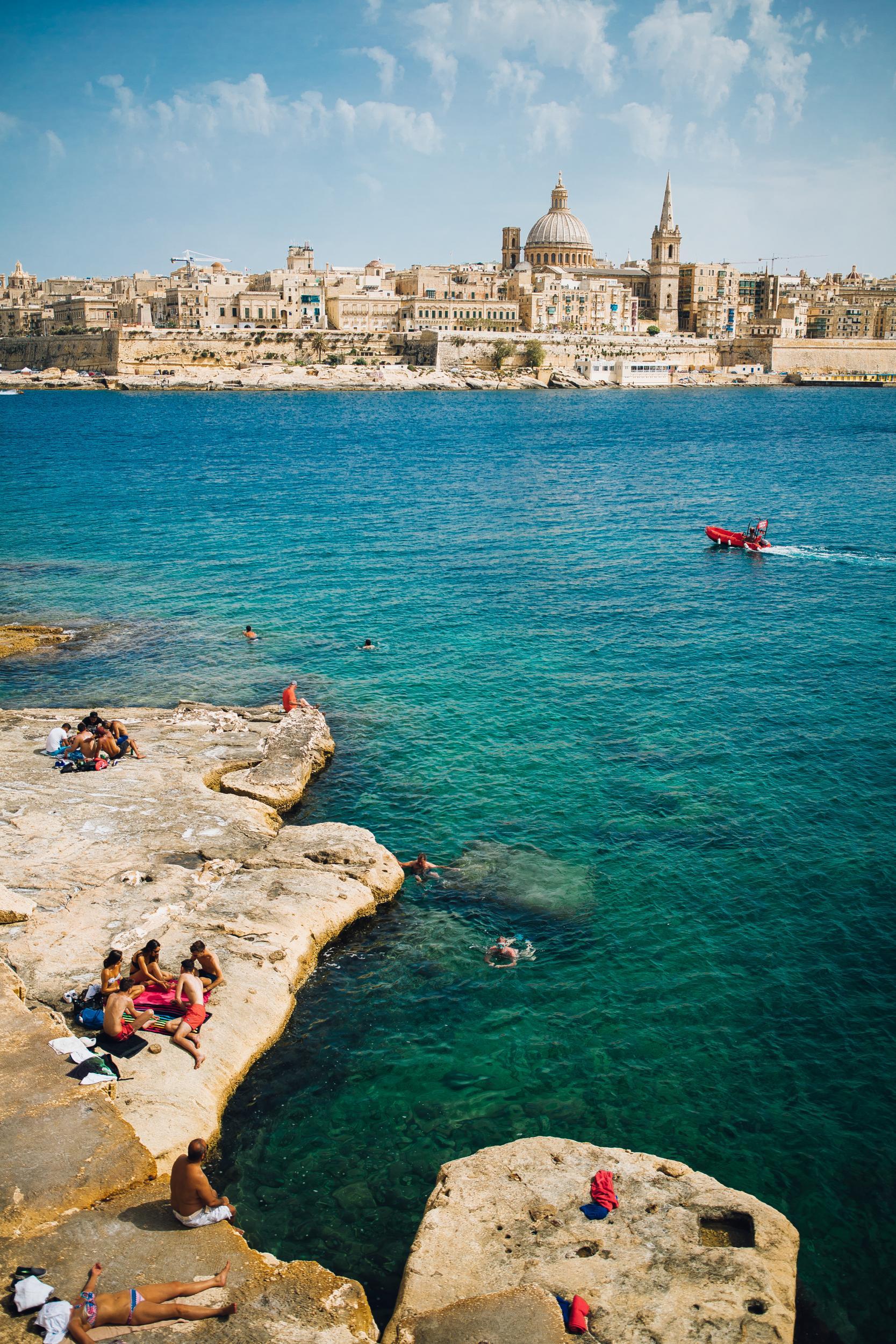
The retail geography in Valletta is quite straightforward: the two main streets for shopping, Republic and Merchant, are lined with a number of global or European branded stores. The more intriguing places are in the side streets.
At 29 Melita Street, Cekcik is a Maltese term broadly meaning “knick-knack” or “loose and random stuff” – making for personalised gifts, such as a vintage telephone.
Just a couple of doors along, Chocolate District sells single-plantation chocolate from other exotic islands, including Madagascar, São Tomé and Hispaniola. It also offers gourmet coffee and tea, and you can drink the stuff on the premises.
An aperitif
In the past few years Valletta has become much more of a night-time city, with many bars and restaurants spilling out on to the streets and coming to life as the sun goes down. But there are still some traditional favourites – including one with a Hollywood connection. The Pub at 136 Archbishop Street was the location for Oliver Reed's last stand. He walked in one day in 1999, while filming Gladiator, but was carried out after a heart attack. His seat in the corner has become a shrine to the hell-raising actor.
Dining with the locals
“Food from the Age of the Enlightenment” is the promise of the Taste History concept, where Malta’s biggest museum becomes a pop-up 18th-century restaurant. The curator at the Malta Maritime Museum, Liam Gauci, has researched exhaustively what the Knights of St John actually ate and recreates their feasts in the sumptuous surroundings of what was once the Naval bakery.
Ingredients have been sourced locally wherever possible to provide antipasti such as sheep’s cheese served with ship’s biscuits, and chickpea and broccoli soup. Main courses include slow-cooked mutton served in a pecorino and vegetable stew. But save room for a remarkable dessert: goat’s milk, cinnamon and lemon ice cream, a recipe from 1746 which used ice that arrived daily by ship from Mount Etna in Sicily.
DAY TWO
Sunday morning: Take a hike
Make a journey around the walls of Valletta. Start at City Gate, the main entrance to Valletta, dramatically re-designed by Renzo Piano. The first sight you see as you pass through the gate is the new Parliament building, also designed by Renzo Piano, followed by the ruins of the Royal Opera House – still used as a venue, but open-air. Climb past the colonnade, then descend along one of the many picturesque thoroughfares of tall townhouses: Battery Street, taking you right over Victoria Gate towards the Grand Harbour.
At Lower Barrakka Gardens, a neo-classical temple is dedicated to Sir Alexander Ball, noted British Admiral and Civil Commissioner of Malta.
Further along the walls, there is a sombre monument to the 7,000 civilian and military victims of attacks on the Second World War convoys that supplied the Maltese islands: the Siege Bell memorial. It includes a sculpture dedicated to the fallen. The island was awarded the George Cross in 1942.
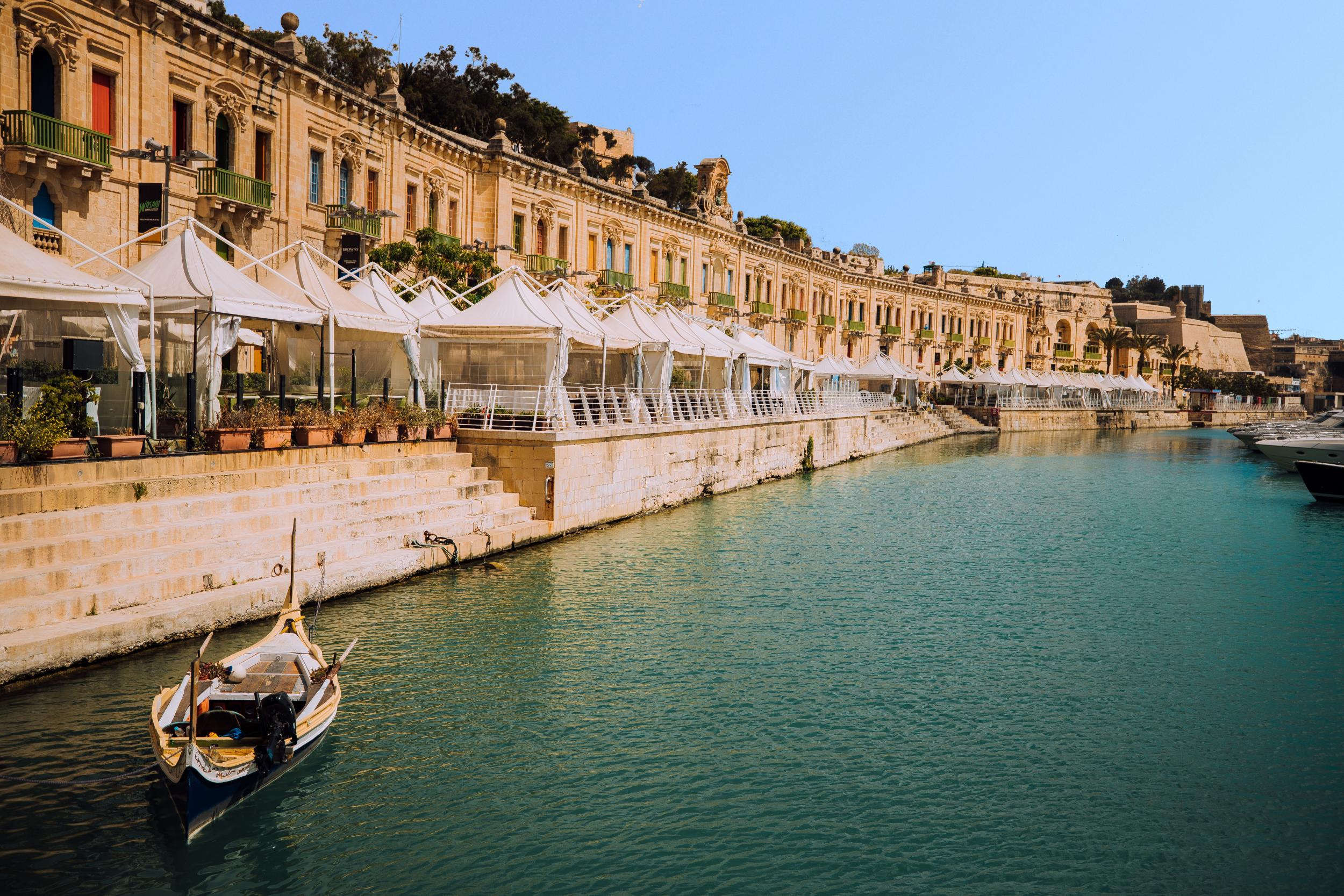
Just beyond here, you can descend to sea level – and discover a fishing village. You have to nudge inland to get past St Elmo’s Fort, the star-shaped fortress that defends the Grand Harbour, and you find yourself looking out across Marsamxett Harbour – from where you could take a ferry to Sliema. Here on the northern side of the city, the view is very different, with derelict military installations interspersed with high-rise apartments.
At the point when you pass a sign for Floriana, turn left and head along the Ditch, a spectacular gorge carved through the limestone to defend Valletta. Where it veers to the right, look to find a gate (open during daylight) that enables you to walk inside the walls and climb back to City Gate.
Out to brunch
Caffe Cordina at 244 Republic Street opens every morning at 8am, and has been satisfying islanders' appetites since 1837. There are tables outside, but the café’s elegant interior is an attraction in its own right. Order pastizzi: pasties filled with cheese or peas. Or take advantage of the excellent breakfasts on offer at various hotels in Valletta; at SU29, a superb spread costs juts €7.95.
Take a ride
From Upper Barrakka Gardens, ride the glass-sided lift down to the waterfront. A round trip costs €1. From sea level you can hop aboard the regular ferry (€1.50 one way, €2.80 return, Valletta-bound trips includes the lift back up) across the Grand Harbour to Cospicua, between Vittoriosa and Senglea.
Cospicua was founded by the Order of Saint John to augment Malta’s formidable military strength. It merges with the oldest of the three cities, Vittoriosa, which was the original home of the Knights of Saint John and is still full of beauty. Completing the trilogy is Senglea, which has a spectacular panorama on offer.
Take a view
One of my favourite views in Europe is from Senglea Point, the fingertip pointing across to Valletta and bringing you the capital in widescreen.
Icing on the cake
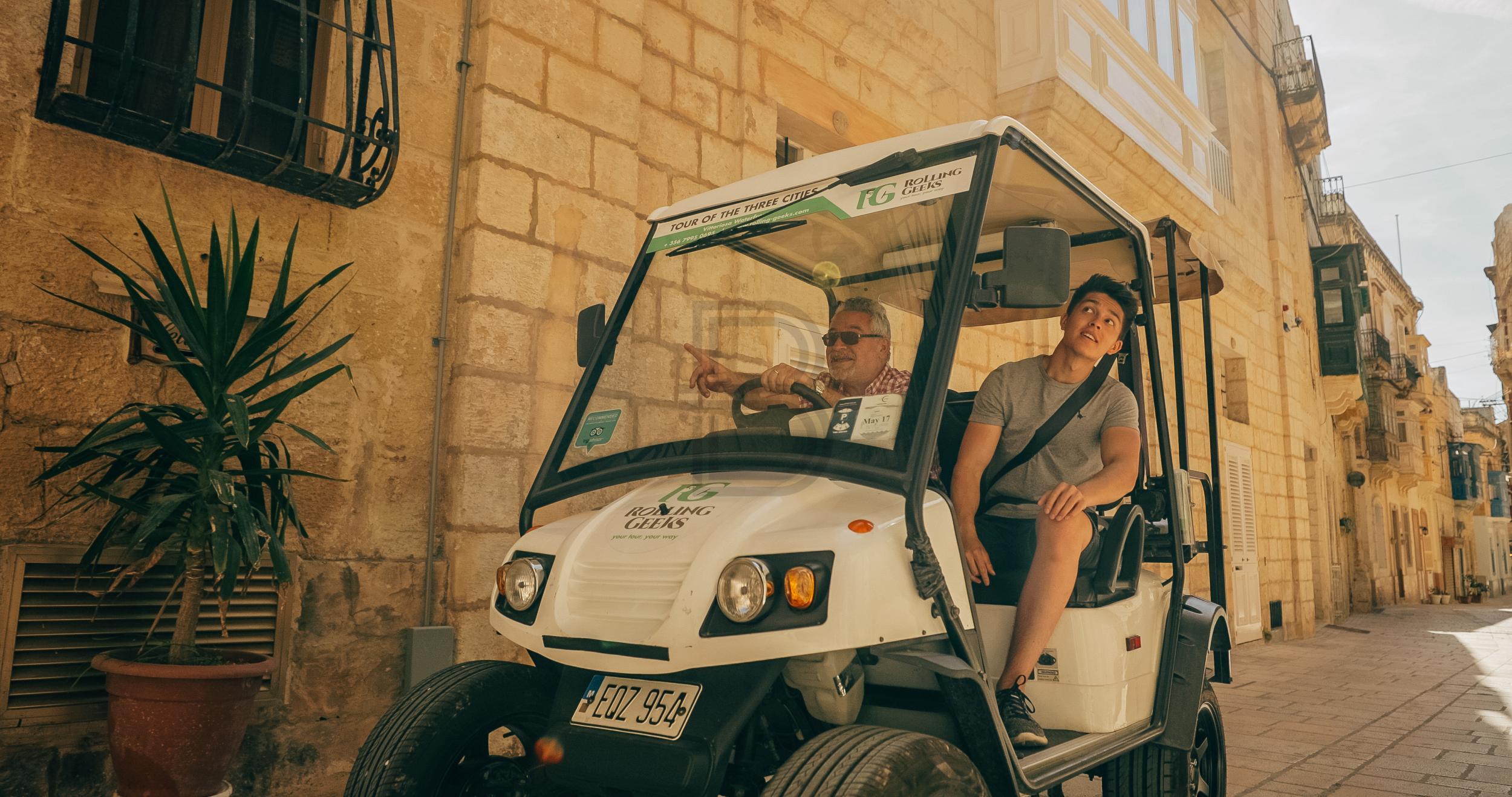
To see the Three Cities close up, aim for Vault II, Palace of the Captains of the Galleys, Vittoriosa – the home of Rolling Geeks, which provides electric car tours of the Three Cities guided by GPS. You can navigate your way around the streets of Vittoriosa, Cospicua and Senglea, with both directions and sightseeing commentary following your journey. The speed is limited to 14mph. The company can watch you, tracking your location from base to know where you are and to help out if need be. You need a driving licence and to be over 21.
The tour is available in eight different languages including Chinese and Russian. Previous guests include Ban Ki-moon and Jean-Claude Juncker – though not in the same car.
The Rolling Geeks tour is an excellent way to bring the technology of the 21st century to help you make the most of a profoundly historic location.
For more information about Malta, please visit maltauk.com

